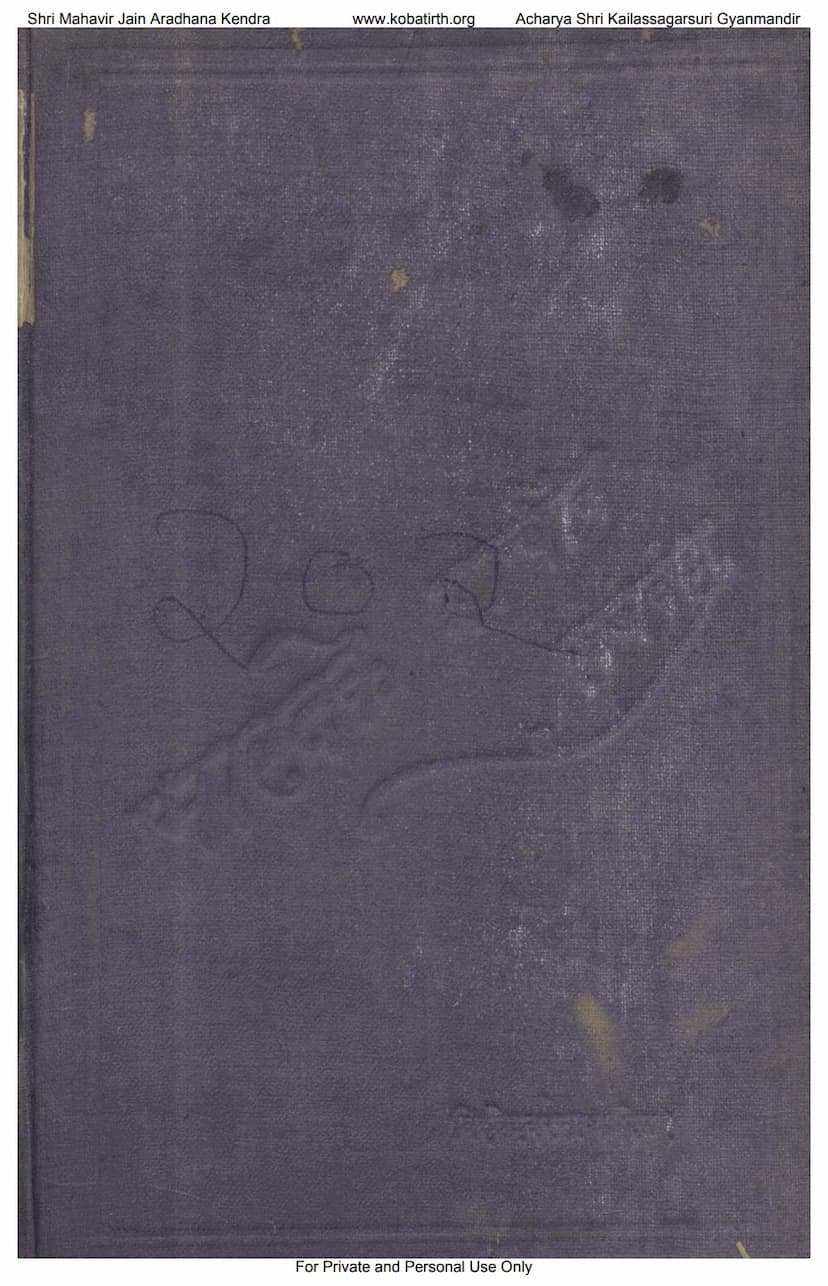Bharat Ke Prachin Rajvansh Part 01
Added to library: September 1, 2025

Summary
The book "Bharat ke Prachin Rajvansh Part 01" (Ancient Dynasties of India, Part 01) by Vishveshvarnath Reu and Jaswant Calej, published by Hindi Granthratna Karyalaya in July 1920, is a historical treatise that aims to provide an account of ancient Indian dynasties. The book is based on a variety of sources, including Sanskrit texts, inscriptions, copper plates, coins, historical chronicles (khyats), and Persian historical records.
The first volume covers the history of the following dynasties:
-
Kshatrapa Dynasty (क्षत्रप-वंश): This section details the history of the Kshatrapas, who are identified as foreigners, likely of Scythian origin from Central Asia. Their rule in India is traced from the first century BCE to the fourth century CE. The text discusses their foreign origins, evidenced by their names and the use of Kharosthi script on their coins. It mentions their territorial expansion across Gujarat, Sindh, Malwa, Kathiawar, and parts of Rajputana. The book analyzes their administrative practices, succession customs, and the evolution of their script and language. It also delves into the complexities surrounding the origin and usage of the Saka era (Shaka Samvat).
-
Haihaya (Kalachuri) Dynasty (हैहय-वंश): This part focuses on the Haihaya dynasty, also known as the Kalachuris. The text traces their lineage to Yadu and highlights their significant presence in ancient Chedi, parts of Gujarat, and southern India. It discusses their evolution from ruling families to those associated with the liquor trade, potentially leading to the name "Kalachuri." The book examines their administrative structure, citing an example from the inscriptions of King Karnadeva of Chedi, which outlines a well-organized state apparatus. The text also touches upon their religious affiliations and philanthropic activities, such as establishing charitable institutions and supporting scholars.
-
Parmar Dynasty (परमार-वंश): This section covers the history of the Parmar dynasty, with a particular focus on their branches in Abu, Jalor, and Malwa. The text traces their origins to the tradition of being born from the sacrificial fire pit of sage Vasistha. It details their territorial influence, their capital at Chandravati, and their eventual decline due to conflicts with the Chauhans and Chalukyas. The book discusses various Parmar rulers, their administrative policies, and their involvement in regional politics. The Malwa branch, particularly the reigns of Munja and Bhoja, is given significant attention, highlighting their patronage of arts and literature, and their military campaigns. The text also attempts to reconcile conflicting historical accounts and legends surrounding these rulers.
-
Pala Dynasty (पाल-वंश): This part explores the history of the Pala dynasty, who primarily ruled over Bengal and Bihar. The text acknowledges their claims of conquering all of India but clarifies their core territory. It discusses their lineage and religious affiliation as Buddhists, while also noting their respect for Brahmins. The book highlights the flourishing of Buddhism in their kingdom, with renowned monasteries like Vikramshila and Nalanda attracting scholars from across Asia. It also touches upon their administrative achievements and the challenges in establishing a precise chronology due to the reliance on regnal years rather than specific era dating in many of their inscriptions.
-
Sena Dynasty (सेनवंश): Following the Palas, this section covers the Sena dynasty, who succeeded them in Bengal. The text discusses their origins, tracing them to Chandravanshi Kshatriyas or Brahmakshatriyas, and their eventual displacement of the Palas. It examines their political influence, their religious leanings towards Hinduism, and the impact of their rule on the socio-religious landscape of Bengal. The book also delves into the complex issues surrounding the establishment of the Lakshman Sena era and the historical accounts of their encounters with Muslim invaders like Bakhtiyar Khilji.
-
Chauhan Dynasty (चौहान-वंश): This is a substantial section detailing the history of the Chauhan dynasty, tracing their origins from Ahichhatrapur to Shakambhari and later Ajmer. The text critically examines their claimed origins, including both solar and lunar lineage traditions, as well as the legend of their Agnikunda (fire-pit) origin. It discusses their territorial expansion, their key rulers, and their military campaigns, including the famous conflict with Muhammad of Ghor. The book analyzes the political landscape of the time, the internal dynamics of the Chauhan kingdom, and the eventual fall of the Chauhan rule in North India. It highlights prominent rulers like Vasudev, Vigraharaja IV, and Prithviraj III, and discusses the historical accounts of Prithviraj's battles and his eventual defeat.
The book aims to provide a scholarly yet accessible account of these significant dynasties, relying on a critical analysis of diverse historical sources to reconstruct the political, social, and cultural history of ancient India. The detailed genealogies and discussions on script, language, and administrative practices indicate a rigorous approach to historical research.